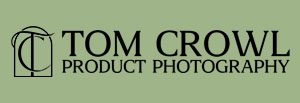Elevating Online Sales Through High-Quality Images
The transformative power of an ecommerce website photoshoot is often underestimated.
Oasis Humidifiers, a Maryland-based company specializing in humidifiers for wooden stringed instruments, recognized the need for high-quality product images for their new ecommerce website and took action.
A Need for Visual Revamp: The Backstory
Dave, the visionary owner of Oasis Humidifiers, was well-aware that in the online world, first impressions are often based on visuals.
He sought the expertise of Randy Goldstein from BizMarquee to design a new ecommerce website for his company.
The older version of the site suffered from subpar, thumbnail-sized images of various dimensions.
Randy, understanding the importance of high-quality images in an ecommerce website photoshoot, referred me to Dave for this critical task.
Crafting the Ideal Ecommerce Website Photoshoot
I set out to conduct an ecommerce website photoshoot that would serve a dual purpose.
The site would feature several types of product images following the best practices for e-commerce photos.
The primary objective was to shoot clean, white-background images ideal for ecommerce platforms.
I also ventured into crafting lifestyle shots featuring the Oasis Humidifiers in action, placed in various instrument cases.
Going Beyond the Conventional: Specialty Shots
Dave expressed interest in unique, eye-catching imagery.
Inspired by a photo I had previously taken of a ginger ale can submerged underwater, we decided to incorporate similar elements.
The relation between humidifiers and water paved the way for innovative photography, perfect for the company’s social media.

Stop Motion Video: A Unique Touch
Another intriguing aspect of this ecommerce website photoshoot was the creation of a stop-motion clip.
The clip demonstrated how the humidifier shrinks as it releases water vapor—an indicator for a necessary refill.
I rigged an old guitar with holes at specific angles to accommodate both the camera and the lighting equipment, using my Canon 5D MarkIV as the backup camera.


Stop-motion video showing Oasis Humidifier shrinking, part of ecommerce website photoshoot.
Deliverables: More than Just Pictures
Oasis Humidifiers ultimately received a collection of over 50 high-resolution product photos, resized appropriately for their ecommerce website and social media channels.
Dave’s trust in my expertise granted me the creative freedom to produce images that not just met but exceeded expectations.
The Results
An ecommerce website photoshoot is an investment that pays off in elevated brand image and increased sales.
If you’re looking to revamp your online store or require high-quality imagery for your marketing efforts, let’s connect.
Experience the transformed Oasis Humidifiers website here.
Note that not all images on the site are my work.
I have used a number of commercial photographers over the years for my business, Oasis … Tom Crowl takes his photography to a higher level than any previous photographers.
I would highly recommend anyone wanting commercial product photography contact Tom.
Discover How Professional Photography Can Elevate Your Brand
Get a Custom Quote Tailored to Your Specific Needs

Take a minute to fill out the form below. Doing so will help me understand your product photography needs. Once I receive your information, I'll reach out to you personally to discuss the project in more detail and create a customized quote for you.
You may also text me at: 410-596-4127 or E-mail me at: tom@tomcrowl.com










